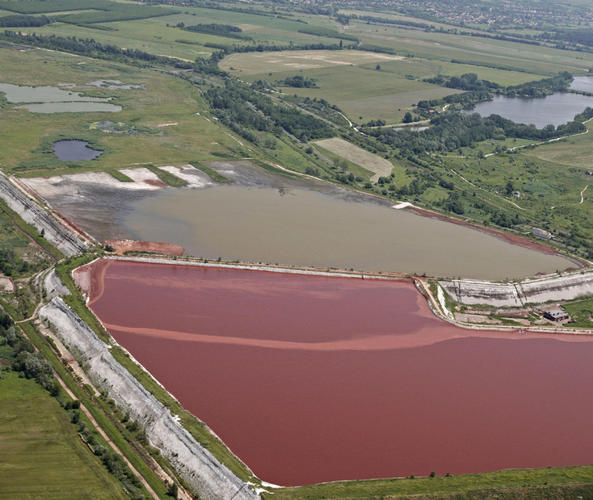
Police were examining the photo Tuesday as part of an investigation into how part of the wall containing the 10 million cubic metres of caustic slurry could have given way without structural weaknesses being detected by a team of inspectors from the government environmental agency who inspected the container pond less then two weeks before the spill. The flood of red sludge killed eight people.
Disaster commissioner Gyorgy Bakondi, appointed to the newly created post Monday night, said Tuesday the inspections were under investigation, including claims by environmental inspectors that "they had found everything in order."
As the police probe gathered steam, judicial authorities scheduled a court appearance for Zoltan Bakonyi, the managing director of MAL Rt., or the Hungarian Aluminum Production and Trade Company, to decide whether he should be formally charged, if so, with what, and whether he should remain in custody.
The photo showing an apparent leak of red sludge on the northern wall of the reservoir - the same wall that partially collapsed eight days ago - was taken by Interspect, a Hungarian company specializing in aerial photography that invests some of its profits on environmental projects, such as taking photos of locations in Hungary that could be at environmental risk.
Interspect director Gabor Bako said he shot the photo June 11, nearly four months before the spill. He said the company shared the photo with universities and environmental groups "but no further steps were taken in the matter" until the wall collapsed freeing the caustic muck that flooded three west Hungarian villages about 170 kms from Budapest before being carried by local waterways into the Danube River.
Although Interspect found many suspicious sites around the country, "we're not construction engineers or specialists who could interpret what the picture showed," he told The Associated Press.
A police statement issued Tuesday suggested Bakonyi was guilty of negligence, saying he did not prepare an emergency warning and rescue plan to be implemented in case of an incident like the sludge spill.
According to the daily Blikk, a lead engineer at MAL Rt., told police the firm's top management was aware - but kept quiet - about the risks of a breach of the reservoir for an unspecified period.
In an initial reaction after the spill, Bakonyi said the reservoir was patrolled daily and "did not show any physical signs that something of this nature could happen." But Prime Minister Viktor Orban suggested preliminary investigations revealed negligence playing a part.
"We have well-founded reasons to believe that there were people who knew about the dangerous weakening of the reservoir wall, but for personal reasons they thought it wasn't worth repairing and hoped there'd be no trouble," Orban said.
Bakondi, the disaster commissioner, said police had taken over security tasks at all premises belonging to the company and that production at the plant could restart during the weekend, although a final decision had yet to be made.
Bakondi leads an 18-member supervisory committee, who will have to approve practically everything happening at MAL from now on.



As background, I have about 8 years of professional expertise in sediment and erosion control, I work for a power company and periodically inspect ash ponds and the associated dams. Forget the small patches of red,the white edges of the dam have not been stabilized properly with soil and vegetation. The white is exposed structural fill. If you look you can also see striations running vertically down the sides of these areas,... erosion gullies. In addition you can see the denser packing of fill, the two layers on the top of the dam, erosion has exposed these denser layers. It is obvious this dam has not been maintained properly for a long time, if ever. Erosion has been slowing removing structural fill material and compromising the outer integrity with rills and gullies. What a mess, obvious negligence in my professional opinion. Peace.